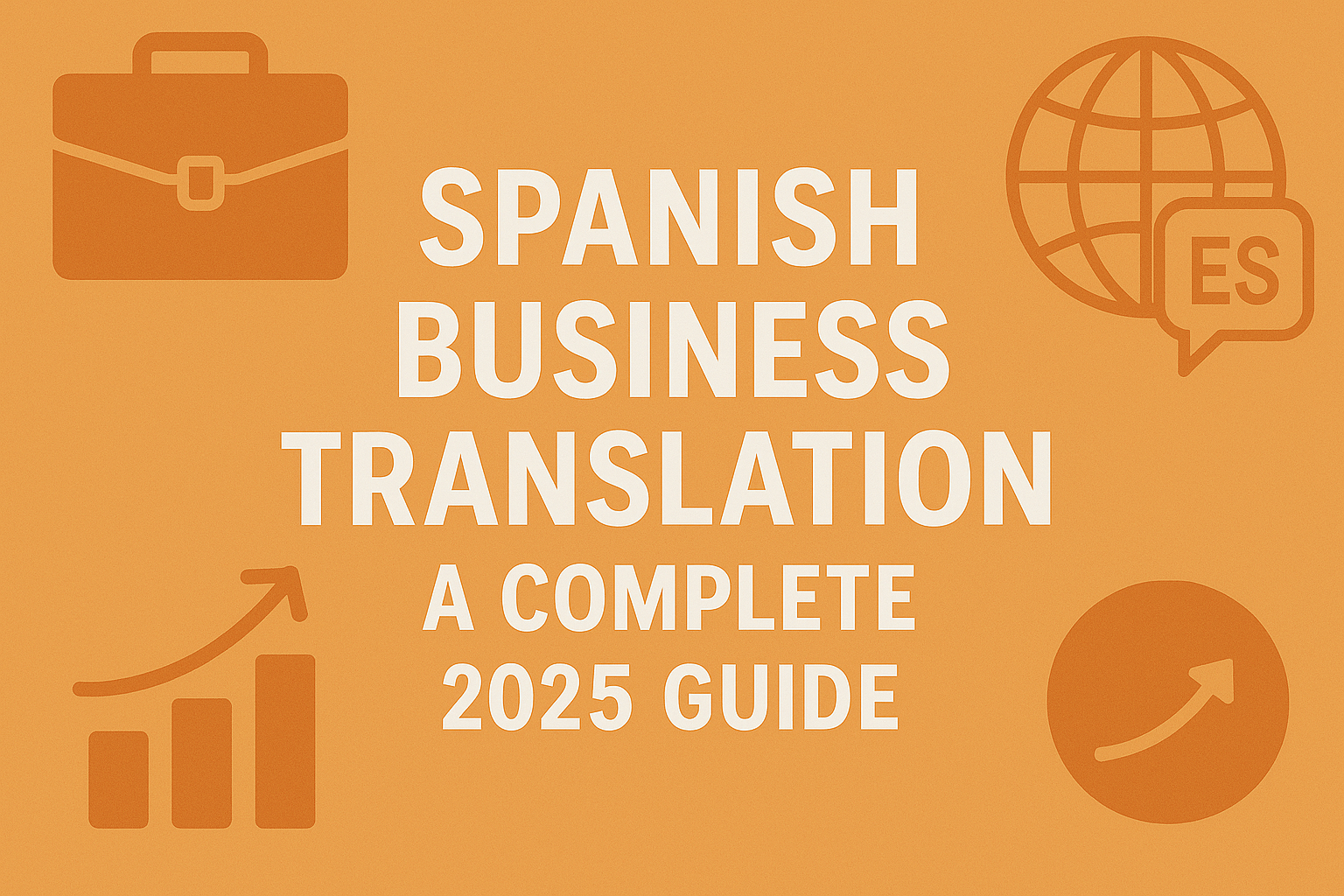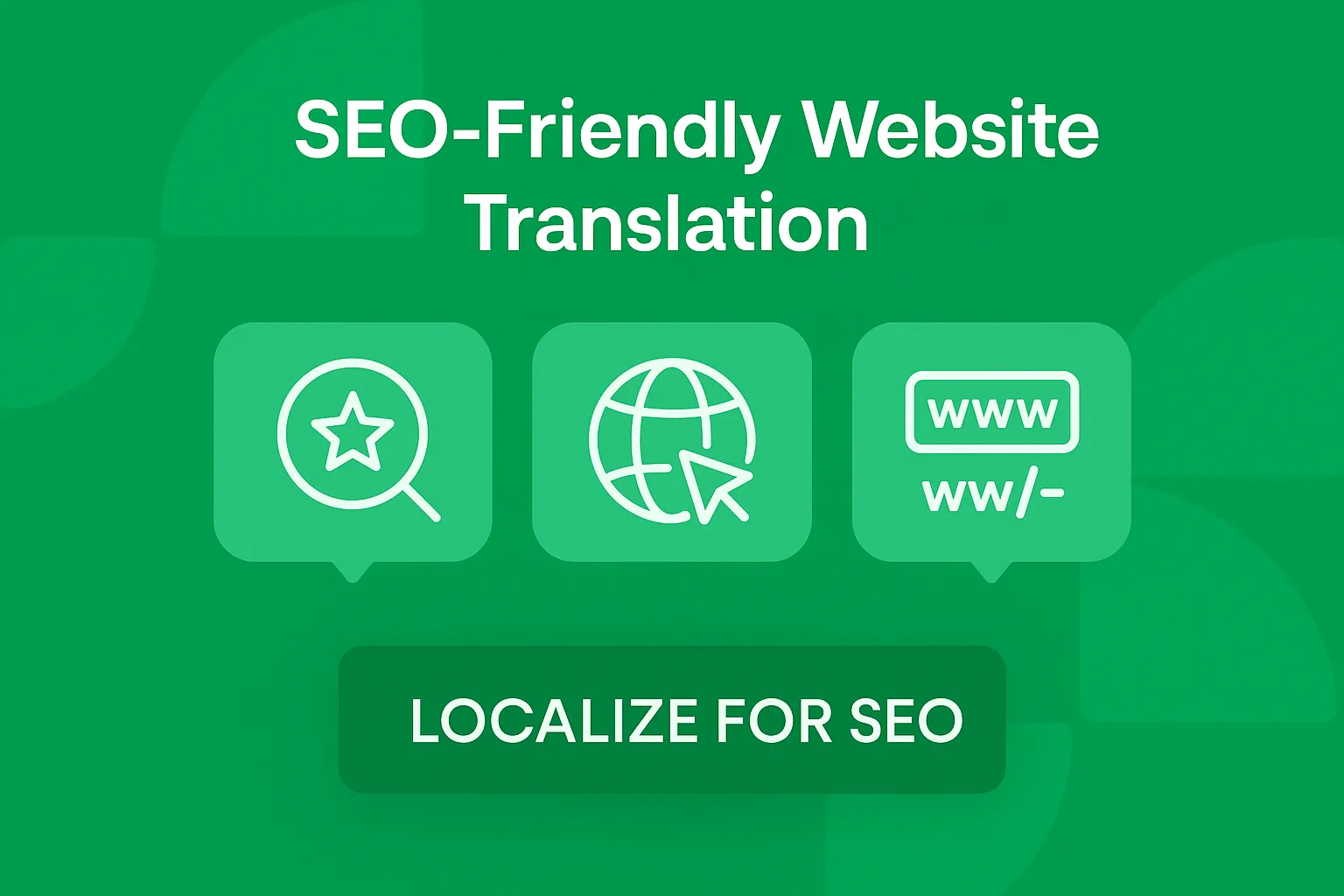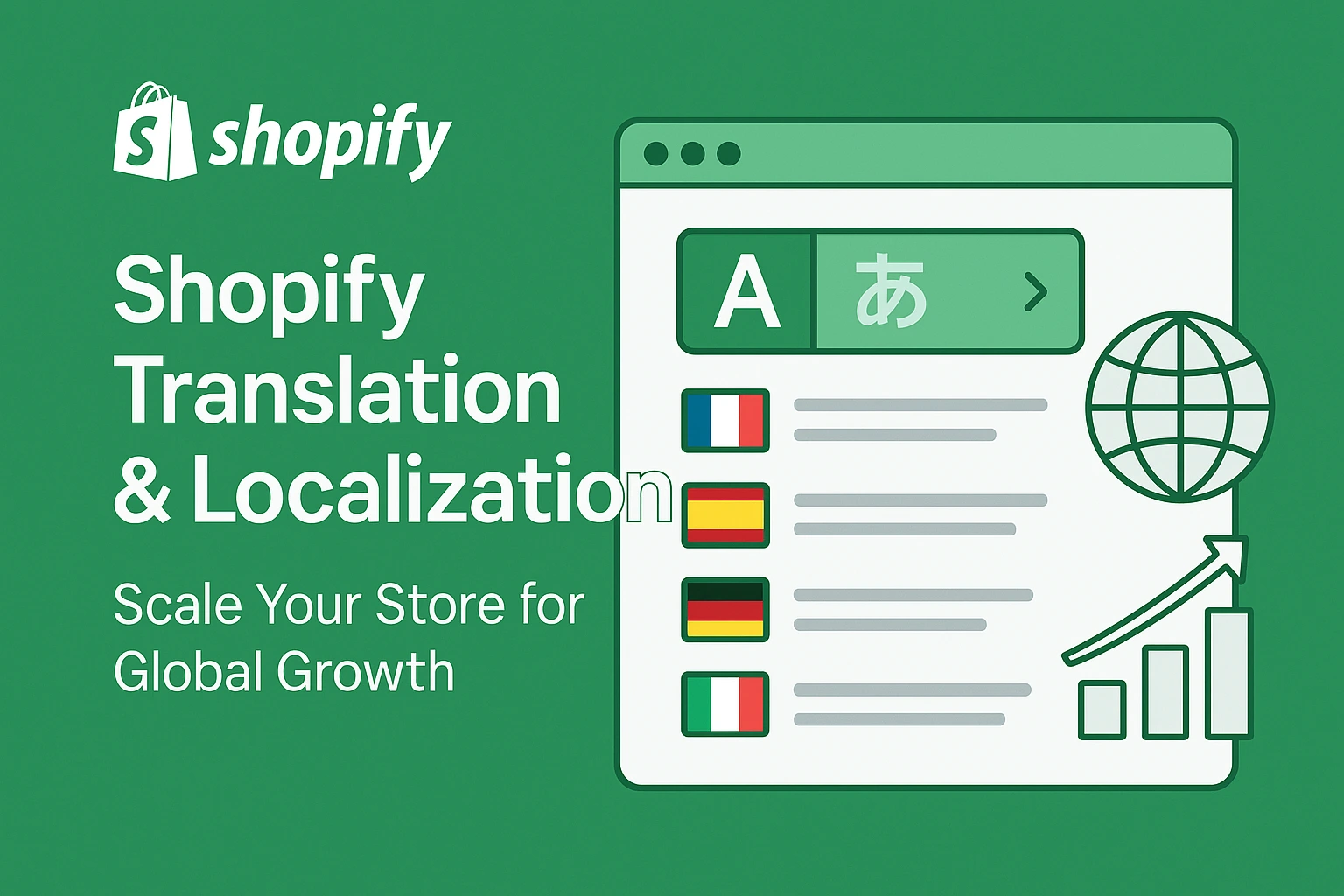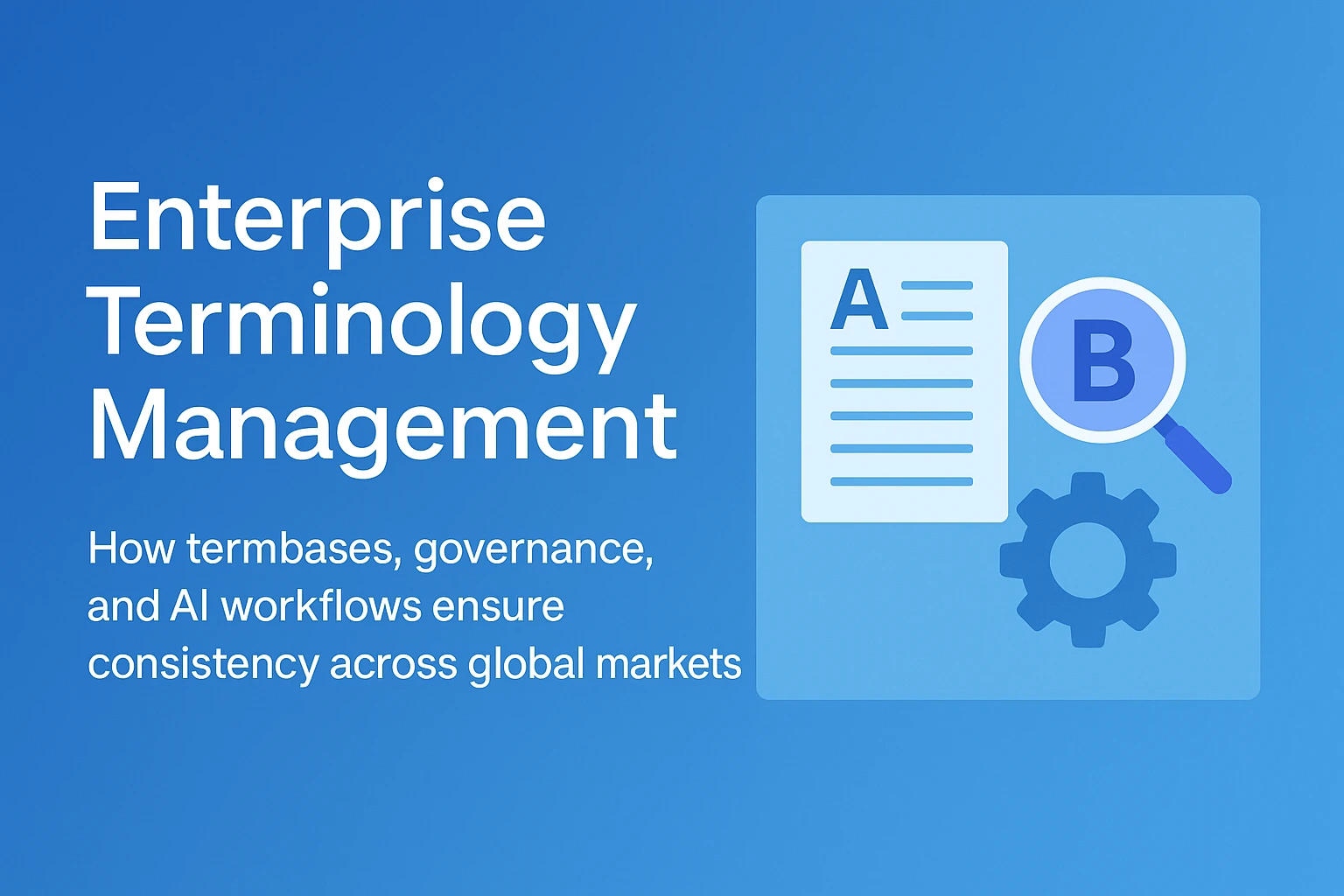As global markets continue to expand and digital commerce crosses borders more seamlessly than ever. Spanish business translation has become a cornerstone for international growth. It’s no longer just a helpful add-on. It’s a strategic advantage.
With over 500 million Spanish speakers worldwide, Spanish ranks as one of the most influential languages in global business communication. In 2025, the surge in trade across Latin America, the Hispanic U.S. population’s growing economic power. This helps increase cross-border collaboration and drives the demand for high-quality, culturally attuned Spanish business translation.
Whether you’re a startup scaling into Spanish-speaking markets or a multinational firm maintaining regional consistency, accurate and professionally localized content is essential. Legal contracts, HR policies, marketing materials, product descriptions, and internal communications must not only be linguistically correct but also culturally appropriate.
Businesses that invest in expert Spanish business translation position themselves for better compliance, stronger customer trust, and more meaningful market presence across Spanish-speaking regions.
Why Spanish Is Crucial for Business in 2025
In today’s globalized economy, language access is a core driver of market expansion. Spanish business translation is at the center of that growth. Spanish is not only the second most spoken language in the United States but also one of the top three languages used in international business communication.
By 2025, Spanish-speaking consumers will have a combined purchasing power of over $2 trillion. This includes growing markets in Latin America and the Hispanic population in the U.S. Their economic influence is rising fast, making these regions top targets for international businesses.
To compete in these regions, companies need more than basic translation. They require professional, culturally attuned, and sector-specific business translation into Spanish that resonates with local audiences. Businesses that fail to communicate effectively in Spanish risk missing out on significant revenue, customer trust, and regulatory compliance.
Key Regions and Markets Where Spanish Translation Is Essential
- United States: With over 40 million native Spanish speakers, the U.S. is home to one of the largest Spanish-speaking populations outside Latin America. Sectors such as healthcare, education, legal services, retail, and public administration all depend heavily on Spanish-language communication.
For brands, Spanish content is not just a localization effort, it’s a necessity for inclusivity, compliance, and market relevance.
- Latin America: Countries like Mexico, Colombia, Chile, Peru, and Argentina have fast-growing economies. They also have large and diverse consumer groups. In these markets, Spanish translation for work is very important. It’s needed for e-commerce, customer support, legal papers, and business deals.
Each country uses a slightly different Spanish. They also have different cultural norms. That’s why localized content, not just basic translation, is so important.
- Spain: Spain is a key entry point for businesses looking to expand into Europe. It offers unique opportunities for growth in the EU market.
But doing well in Spain takes more than just translation. You need Castilian Spanish localization. That means using the right vocabulary, grammar, and tone that match local preferences and legal rules.
By recognizing the diversity within the Spanish language and investing in professional business translation, companies position themselves for long-term success across the Western Hemisphere and beyond.
Types of Spanish Business Translation Services Offered
As businesses expand into Spanish-speaking markets, the demand for specialized translation services continues to grow. Spanish business translation is not a one-size-fits-all solution. It involves a range of services customized to different departments, industries, and communication goals. Professional translators, whether freelancers or agencies, offer services that cover every touchpoint of business communication.
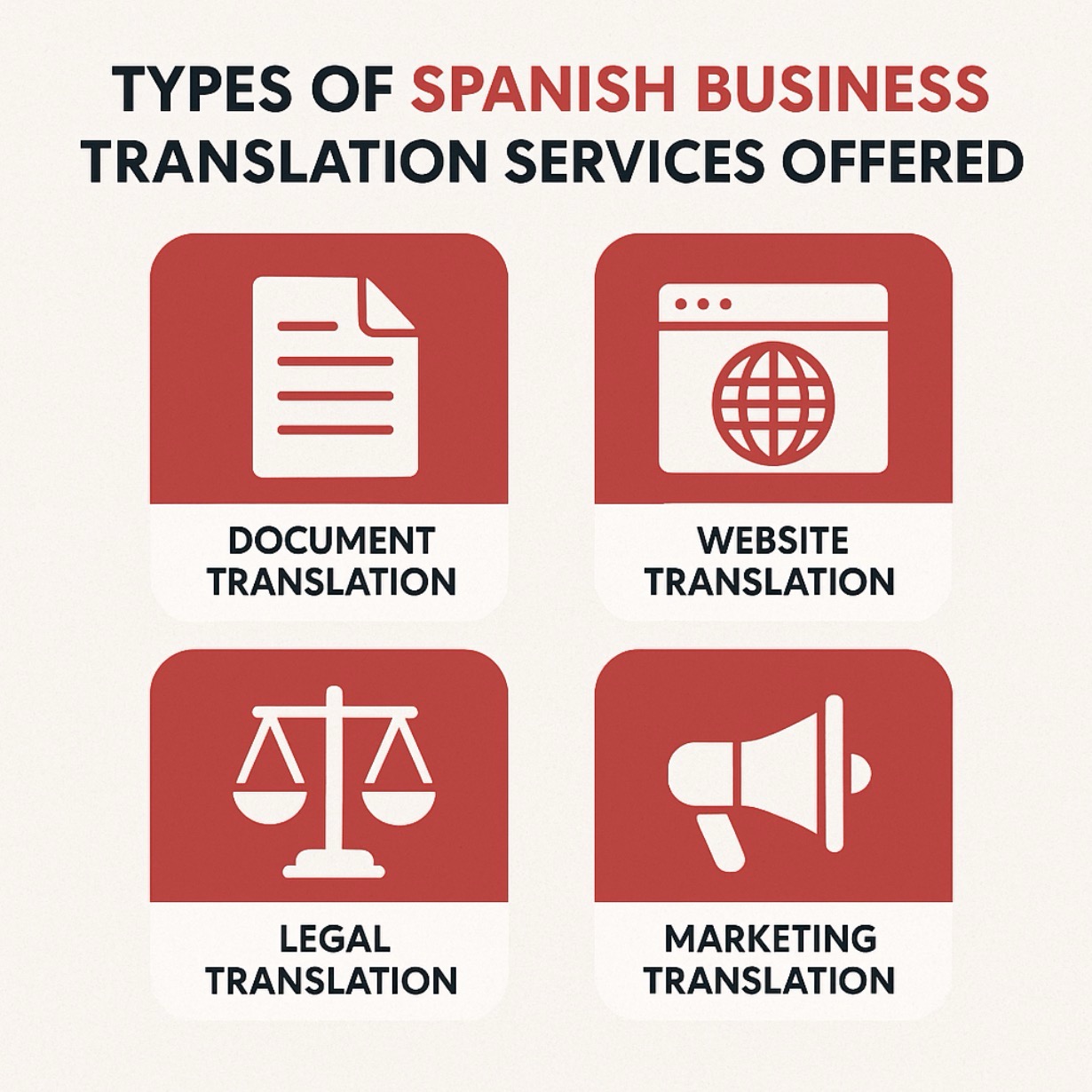
1. Legal Document Translation
Legal translation requires high precision and full understanding of legal systems in both source and target countries. From contracts and NDAs to compliance documents and terms of service, any error can lead to serious legal or financial consequences. Legal Spanish varies across countries, making localized expertise essential.
2. Financial Reports and Contracts
Finance-related translations must be 100% accurate, especially with numbers. It’s important to translate complex financial terms correctly. Common documents include income statements, balance sheets, and investment papers. Banking contracts and financial reports also need careful translation. Clear and accurate financial translation builds trust with Spanish-speaking investors and partners.
3. HR and Internal Policies
Translating HR materials into Spanish is very important. This includes employee handbooks, training guides, and workplace policies. It helps all staff understand key information, no matter their native language. Everyone knows their rights, roles, and responsibilities clearly.
It also supports better alignment with the company’s values and culture. This is especially vital for companies operating in the U.S., where Spanish-speaking employees make up a large portion of the workforce.
4. Website and Product Localization
Localization goes beyond direct translation. It adapts website text, visuals, navigation, and calls-to-action to suit local culture and consumer behavior. Localized product descriptions, shipping details, and support pages significantly improve the user experience and boost conversions.
5. Marketing and Advertising Content
Marketing materials need to strike the right emotional tone to connect with local audiences. Translators must not only convey the message but also adapt slogans, headlines, and brand voice to reflect cultural values and expectations. What works in the U.S. might fall flat or, worse, offend, in Spain or Latin America.
6. Investor Presentations and Client Communications
For businesses seeking funding or partnerships, accurate and polished translations of pitch decks, annual reports, or business proposals can influence major decisions. Clear communication in Spanish helps international stakeholders feel confident and informed.
English to Spanish Business Translation: More Than Words
Business translation isn’t just about converting text, it’s about conveying the right message in the right context. English to Spanish business translation must account for tone, formality, terminology, and audience expectations.
For example, financial jargon in the U.S. might have no direct equivalent in Argentina, and marketing slogans may require complete rephrasing to remain persuasive.
Cultural missteps or awkward phrasing can undermine trust, especially in formal sectors like law, finance, or healthcare. That’s why professional translators with domain-specific knowledge are so important. They ensure that the Spanish version not only mirrors the original meaning but also resonates with its audience.
Industry-Specific Use Cases
Different industries have unique translation needs. Here’s how Spanish translation for business plays a key role across sectors:
- eCommerce: Localizing product listings, return policies, and checkout processes improves accessibility and trust. Spanish-speaking customers are more likely to purchase when content feels native to their region.
- Healthcare: Medical documents, patient forms, and treatment guides must be translated with extreme accuracy. Miscommunication can risk patient safety or lead to legal issues.
- Finance: Precision is crucial in this sector. Investment firms, banks, and financial advisors rely on high-quality Spanish translations to maintain credibility and avoid regulatory errors.
- Technology: Software interfaces, help centers, and user manuals need to be user-friendly for Spanish speakers. A smooth user experience can reduce support costs and improve customer satisfaction.
- Education: Translating online courses, instructional materials, and academic resources opens new markets and makes learning accessible to a broader audience.
Quality Spanish business translation is critical to building trust, ensuring compliance, and driving engagement in any industry. It’s not just a translation task; it’s a business investment that supports long-term growth in Spanish-speaking regions.
How to Choose a Spanish Business Translator
Choosing the right Spanish business translator can make a significant difference in how your brand is perceived and how effectively your content performs in new markets. Whether you’re translating legal contracts, marketing materials, or internal documents, the translator’s qualifications and approach directly affect the outcome.
Key Factors to Consider
Native Spanish Fluency
Native-level fluency is critical, especially when tone, idioms, and cultural nuances matter. A fluent translator ensures your message feels natural and professional to the target audience.
Industry Experience
A translator who understands your specific industry. Whether it’s legal, medical, tech, or finance, you will be better equipped to use the correct terminology and tone.
Certifications
Look for recognized qualifications such as ATA (American Translators Association) or ISO certification. These ensure a standard of accuracy and professionalism.
Use of CAT Tools and QA Processes
Professional translators often use Computer-Assisted Translation (CAT) tools, translation memory systems, and quality assurance checks to maintain consistency across large projects.
Positive Reviews or Case Studies
A proven track record with businesses similar to yours is a strong indicator of reliability. Ask for references or examples of previous work.
Freelancers vs. Agencies: Which Is Best for You?
Depending on your budget and project scale, you’ll need to choose between working with a freelancer or a translation agency.
| Freelancers | Agencies |
| Lower cost | Scalability for large projects |
| Direct, personal contact | Access to full-service offerings |
| May lack formal QA processes | Includes structured QA and project management |
Decision Tip: If you’re managing short-term or low-volume projects, a skilled freelancer may suffice. For ongoing or large-scale translation work, agencies offer more consistency, team-based workflows, and specialized support.
Questions to Ask Your Spanish Translation Provider
Before hiring a translator, ask these questions to assess fit and expertise:
- What regional variation do you specialize in (e.g., Mexican Spanish, Castilian Spanish)?
- What quality control process do you follow?
- Do you have examples of work in my industry?
- What is your typical turnaround time for a project like mine?
- Can you provide localization along with translation?
These questions help ensure you’re hiring someone who can deliver accurate, relevant, and high-quality results.
Common Challenges in Spanish Business Translation
Even experienced companies can run into issues if they don’t account for the unique challenges of Spanish translation:
- Regional Differences: Spanish vocabulary and usage vary by country. For example, “you” in Spain is often “tú,” while Latin America may use “usted” for formal address. This affects tone and professionalism.
- Legal and Formatting Standards: Legal documents must be formatted according to local conventions and translated using terminology that aligns with national legal systems.
- Tone and Style Consistency: Maintaining a consistent brand voice across different documents and dialects is a common challenge, especially for companies with multiple translators or teams.
By selecting the right professional and understanding these nuances, your Spanish business translation efforts will be much more effective and reliable across markets.
Tools and Technologies in Spanish Business Translation
Modern Spanish business translation isn’t just about language—it’s about using the right technology to ensure accuracy, consistency, and efficiency across projects. Here are the core tools professionals rely on:
- CAT Tools (Computer-Assisted Translation)
Tools like Trados and MemoQ help translators work faster and more accurately by segmenting text, storing repeated phrases, and managing large projects. These tools also help maintain consistency in tone and terminology. - Translation Memory (TM) Systems
TM systems store previously translated content. When similar or identical phrases appear again, the system suggests those past translations, saving time and ensuring consistency across all documents. - Glossary and Style Guide Management
A defined glossary ensures that key business terms are always translated the same way. Style guides help maintain the tone, formatting, and brand voice, especially when multiple translators work on the same brand content. - Project Management Tools
Platforms like Smartcat and Lokalise streamline workflows for teams and agencies. They allow for task assignment, deadline tracking, collaborative editing, and integrated QA processes, making them ideal for handling complex translation projects with many moving parts.
Benefits of High-Quality Spanish Business Translation
Investing in professional, accurate Spanish translation brings long-term business value. Here’s how:
- Expanded Market Access
Accurate translation allows your brand to enter new markets—especially in Latin America, the U.S., and Spain—without language being a barrier. You can reach new customers, partners, and regions more effectively. - Stronger Brand Trust
Well-translated content signals professionalism and respect for the audience. When customers see content in their native language that feels natural and culturally appropriate, it builds trust and credibility. - Compliance with Local Laws
Many industries, especially legal, financial, and healthcare, require content to be translated accurately to meet local regulations. Poor translation could result in misunderstandings or even legal consequences. - Improved Customer Satisfaction
Spanish-speaking customers are more likely to engage with your products or services if the language feels familiar and correct. This leads to better user experiences, fewer support issues, and higher retention.
Using the right tools and delivering consistent, localized translations are what separate average businesses from truly global brands.
Conclusion
Investing in expert business translation in Spanish is a smart, future-proof move. As AI reshapes search and consumer behavior, brands with multilingual and localized content gain an edge. Make your Spanish content part of your growth strategy.
Frequently Asked Questions (FAQs)
How much does business translation into Spanish cost?
Business translation rates usually fall between $0.10 to $0.50 per word. Prices depend on factors like document complexity, subject matter (e.g., legal or technical), word count, and turnaround time. Urgent projects often cost more. Longer-term contracts may qualify for discounts. Always ask for a quote based on your specific needs.
Can a business use Google Translate for Spanish documents?
While Google Translate is fast and free, it’s not suitable for business content. It often misses context, tone, and industry-specific terminology. This can lead to confusing or even misleading messages. For legal, financial, or customer-facing materials, human translation is far more reliable. Accuracy and cultural relevance are key in business.
Is localization needed for Spanish-speaking audiences?
Yes, localization is needed. It goes beyond direct translation by adapting the language, tone, phrasing, and formatting to suit regional expectations. For example, Spanish used in Mexico differs from Spanish used in Spain. Localization helps your brand connect naturally with local audiences and avoids cultural missteps that could hurt credibility.
What is the Spanish word for business?
The Spanish word for “business” is usually “negocio” (singular) or “negocios” (plural). If referring to a company or firm, “empresa” is the more appropriate term. Each term has a slightly different context, so usage depends on what you’re talking about: commerce in general, or a specific company.
How do I start a Spanish translation business?
To start, register your business legally in your area. Then, pursue certifications like ATA (American Translators Association) or similar, which help build trust. Choose a niche (e.g., legal, healthcare, eCommerce, etc) and develop your skills. Finally, market your services through websites, freelance platforms, and networking in your industry.
What is the Spanish word for businessman or businesswoman?
In Spanish, a businessman is called an “empresario”, and a businesswoman is an “empresaria.” These terms are commonly used in both Spain and Latin America. In more casual settings, words like “dueño de negocio” (business owner) may also be used depending on context and formality.
What is ‘business name’ in Spanish?
“Business name” can be translated as “nombre comercial”, which refers to the trade name or public-facing name of a business. In legal contexts, you might also see “razón social”, which refers to the registered name of the company. The choice depends on whether you’re talking legally or informally.
Is there a free professional Spanish translation service?
There are free tools like Google Translate and DeepL, but they aren’t truly professional. These tools can help with casual or internal drafts, but shouldn’t be used for anything official. For formal business documents, a certified translator ensures accuracy, tone, legal compliance, and cultural fit.
How do I translate my company documents into Spanish?
Hire a certified Spanish translator who has experience in your specific industry. This ensures accurate use of terminology and formatting. Also, make sure the translator understands regional differences if you’re targeting a specific country. Provide reference documents or style guides to keep translations consistent with your brand.
What industries benefit most from Spanish business translation?
Industries with high customer interaction or regulatory requirements see the most benefit. These include e-commerce, healthcare, legal services, financial firms, technology providers, and tourism. In each case, clear, culturally relevant Spanish content helps build trust, drive conversions, and meet local compliance standards.
Where can I find Spanish translation services near me?
Start with a local Google search or use platforms like ProZ, TranslatorsCafé, or ATA’s directory. Many professional agencies offer remote services, so you can work with experts even if they’re not in your city. Look for client reviews, industry experience, and certification to ensure quality.
What’s the difference between English to Spanish translation and localization?
Translation is about converting words from one language to another. Localization is deeper. It adapts your message to fit the cultural, legal, and regional expectations of your audience. For example, a website translated for Spain will differ from one localized for Mexico, even if both use Spanish.







